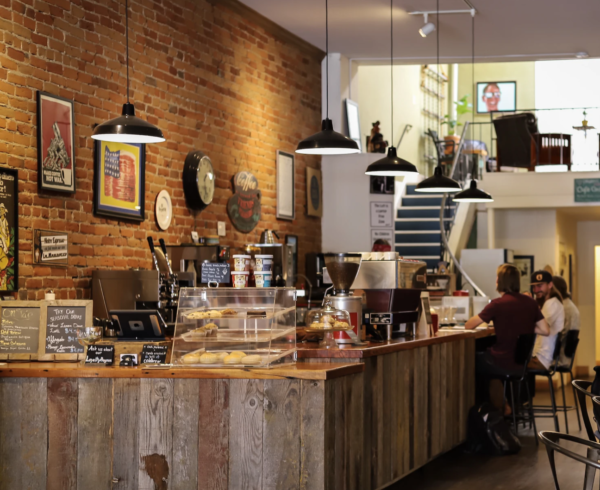Let’s dive into a few detailed case studies that show how companies have leveraged microservices to overcome complex challenges and drive innovation:
Netflix
Challenge: Netflix needed to scale their streaming platform to not only handle millions of concurrent users but also to rapidly roll out new features and effectively isolate system failures. Their original monolithic architecture couldn’t keep pace with the explosive growth in content demand and the need for seamless streaming experiences.
Microservices Implementation: Netflix transformed its architecture into hundreds (or even thousands) of independent microservices. Each service handles a specific function—like user recommendations, content delivery, or billing—making it possible to update, scale, or troubleshoot a single area without affecting the entire platform.
Results:
- Fault Isolation & Resilience: Failures in one service rarely bring the whole system down.
- Rapid Deployment: Teams can deploy new features independently, reducing time-to-market.
- Scalability: Each service can be scaled based on demand, ensuring smooth streaming even at peak times.
Netflix’s pioneering approach has since set an industry standard for building resilient, scalable systems.
Amazon
Challenge: In its early days, Amazon operated as a monolith. However, as the e-commerce giant expanded, the monolithic architecture became a bottleneck for scaling and innovation across a rapidly growing suite of services—from user authentication to inventory and payment processing.
Microservices Implementation: Amazon refactored its system into a distributed, service-oriented architecture. Each microservice focuses on a single business capability (for instance, handling payments or managing user accounts). This separation allowed teams to work concurrently and independently.
Results:
- Enhanced Scalability: Discrete components can be scaled individually to handle spikes in demand.
- Operational Efficiency: Faster rollouts and updates across different facets of the platform help optimize the overall user experience.
- Birth of AWS: The technology behind their internal microservices helped evolve Amazon Web Services into one of the leading cloud platform, like Azure.
This transformation empowered Amazon to maintain its competitive edge while handling unprecedented growth.
Uber
Challenge: As Uber rapidly expanded its global ride-hailing operations, its monolithic system started to buckle under the pressure of managing everything from driver matching to real-time navigation and fare calculation on a massive scale.
Microservices Implementation: Uber adopted microservices to break down its complex operations. Key functionalities such as ride requests, payments, driver management, and notifications became separate services. This restructuring allowed each component to be updated and scaled independently.
Results:
- Agility: Quick and independent iterations of core functionalities improved user experience and reliability.
- Resilience: Isolation of services meant that if one component failed, it would not cripple the entire system.
- Scalable Operations: Teams can optimize specific services based on regional or temporal demand without overhauling the entire platform.
Uber’s journey highlights how microservices can enable rapid global scaling and complex, dynamic service coordination2.
Groupon
Challenge: Faced with a surge in users and a heavy load from transactions and coupon redemptions, Groupon’s monolithic architecture was struggling to keep up with performance and reliability demands.
Microservices Implementation: Groupon undertook a migration journey to a microservices architecture, breaking up their large system into smaller, independently deployable services. Each service now managed a distinct part of the transaction or coupon process.
Results:
- Improved Efficiency: Targeted changes and rollouts meant businesses could adjust features without impacting the whole system.
- Fault Containment: Isolating functions helped ensure that any failure stayed confined to one service.
- Faster Time-to-Market: Smaller, agile teams working on discrete services allowed for quicker adjustments aligned with market needs.
Groupon’s case study exemplifies the operational gains of moving away from a monolith and embracing modularity.
Summary Table
| Company | Initial Challenge | Microservices Strategy | Key Benefits Achieved |
|---|---|---|---|
| Netflix | Scaling a high-demand streaming service | Split into hundreds of independent services | Increased resilience, faster feature releases, independent scaling |
| Amazon | Outgrown monolithic e-commerce platform | Transitioned into a service-oriented architecture spanning multiple business functions | Enhanced scalability, operational efficiency, and spawning AWS |
| Uber | Managing rapidly growing, global ride-hailing operations | Broke down complex functionalities (ride matching, payments, etc.) | Agile deployments, improved reliability, isolated failures |
| Groupon | Handling a surge in transactions and data complexity | Migrated key processes to independent services | Reduced downtimes, quicker upgrades, fault isolation |
Additional Examples
Companies like Spotify and Airbnb have similarly embraced microservices:
- Spotify uses microservices to handle personalized music recommendations and a vast library of content, ensuring smooth, tailored experiences for users.
- Airbnb leverages the flexibility of microservices to update booking and payment systems independently, which enhances system robustness and customer satisfaction
These case studies clearly illustrate that while the transition from a monolith to microservices can be complex and challenging, the resulting agility, scalability, and resilience often lead to significant competitive advantages.








